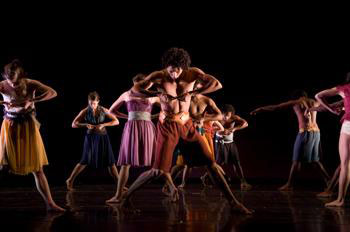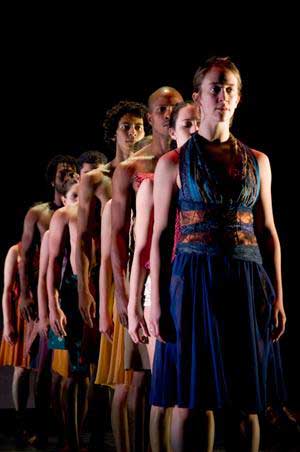
Innovative UT Dance Production ‘Cancion Del Cuerpo’ An Artistic And Cultural Milestone

One of the joys of working on the University of Texas campus is just being around the constant, countless amazing things that go on every day on the Forty Acres.
Over the weekend, I attended a dance performance that both surprised and challenged me — the Friday night premier of the Cancion del Cuerpo project from UT’s Department of Theatre and Dance.
I didn’t know what to expect, since I’d never been to a dance performance before, but it didn’t take long for me to realize I was seeing something special.
Part of what was so remarkable about Cancion del Cuerpo (“Song of the body”) was that it featured UT students dancing alonside professionals from Colombia’s Colegio del Cuerpo.
Rough equivalents would be the UT men’s basketball team getting to train alongside and then play with the Dallas Mavericks, or music students getting to perform with the Philadelphia Symphony Orchestra. That’s how big of a deal it was.
“Having our students performing with the Colegio del Cuerpo company has gigantic and multilayered benefits for the Dance students,” College of Fine Arts dean Doug Dempster said, “beginning with the opportunity to dance with professional dancers over a sustained project, expanding into all the subtle influences and lessons that grow out of cross-cultural exchange.”
All of the dances were original works by UT faculty, working in conjunction with guest choreographer and artistic director of El Colegio del Cuerpo Alvaro Restrepo. The actual performance, before a packed house at the B. Iden Payne Theater, represented the culmination of a six-month, transcontinental collaboration.

The whole production got started when UT law professor Karen Engle stumbled onto a performance by El Colegio del Cuerpo while on sabbatical in Bogota in 2007.
What you should know, first, about the dancers from El Colegio del Cuerpo is not only that they are lithe, muscular, elegant beings, all — they also come from underprivileged backgrounds. The school rescues many of the students from the dangerous streets of Cartagena, then houses, feeds, and trains them to be world-class performers.
Or as UT professor and co-artistic director Lyn Wiltshire puts it, “They dance for their very survival.”
After Engle saw them perform in Bogota and heard their story, she and the Rapoport Center for Human Rights and Justice invited Restrepo to visit Austin, and the idea for a joint performance first came up.
In August 2009, Restrepo and a small cadre of elite dancers traveled from Cartegena to Austin for a two-week workshop with the UT faculty and students. In December, the UT contingent returned the visit.
For UT students to get to work with the El Colegio dancers offered them chances to learn about artistic and cultural issues well beyond just dancing.
“Cultural and educational diplomacy may be one of the most promising and effective forms of building international relations,” Dempster said. “The Cancion del Cuerpo collaboration is a near perfect example of how to do that well.”
All of that aside, the performance itself was amazing. Granted, I am a novice, but the dances struck me as energetic, emotional, and honest.
There’s no question that the months of practice and the international visits and the camaraderie that can only come from months of collaboration all showed through. And there was something deeply moving about the “song of the body” being performed by dancers who have known such hardship and could express it through art.
More than anything else, I was proud to be a part of the University of Texas family that night. We talk a lot about what starts here changing the world. Friday’s performance was a great example.
It certainly changed me.

















1 Comment